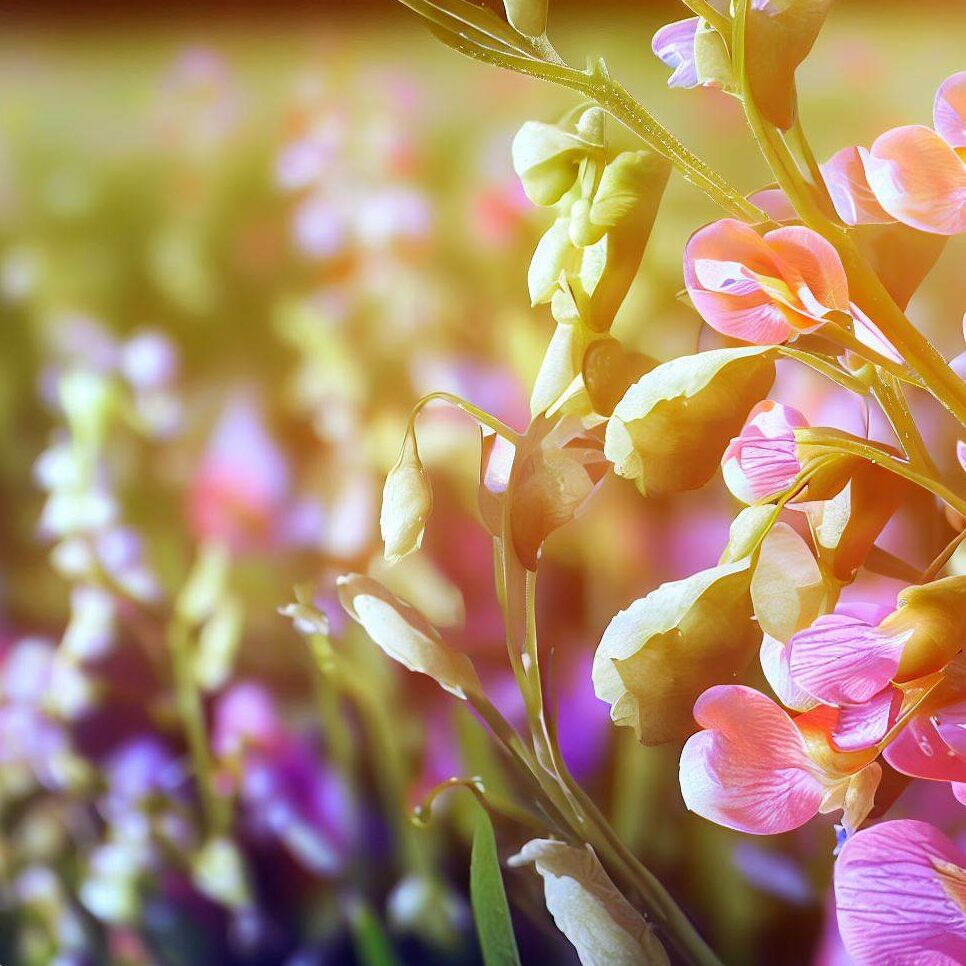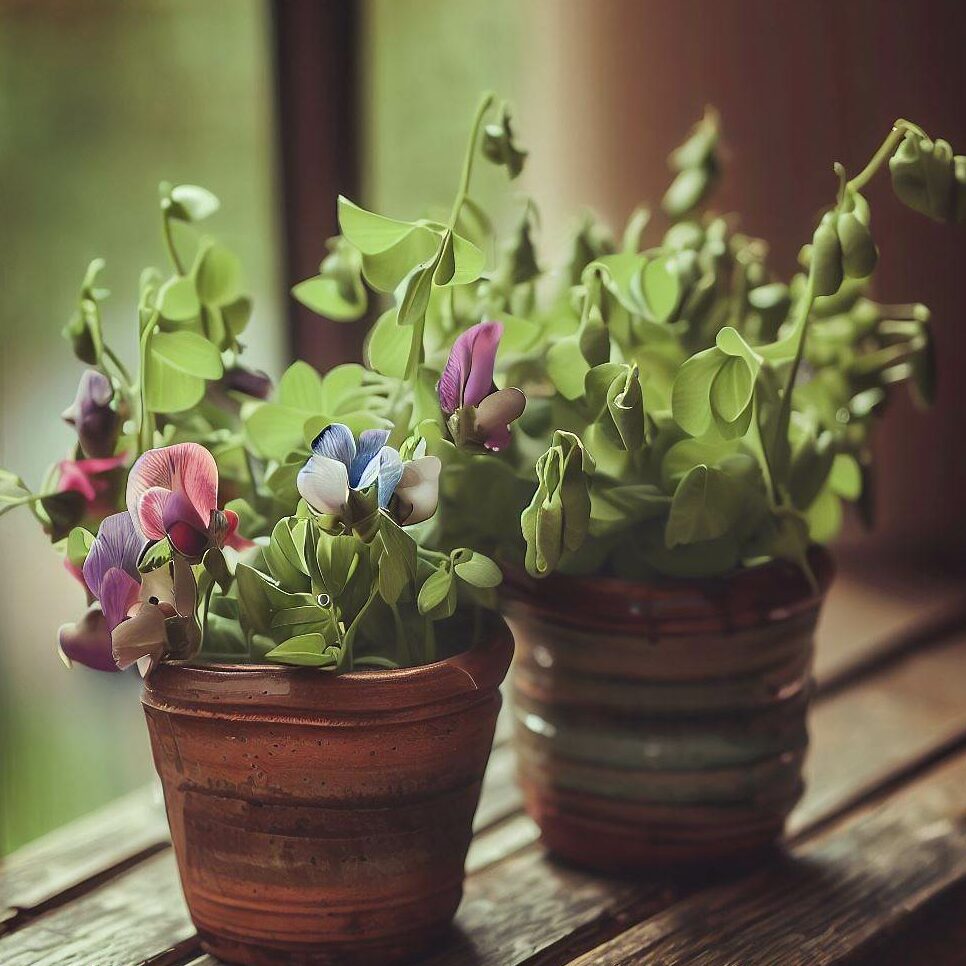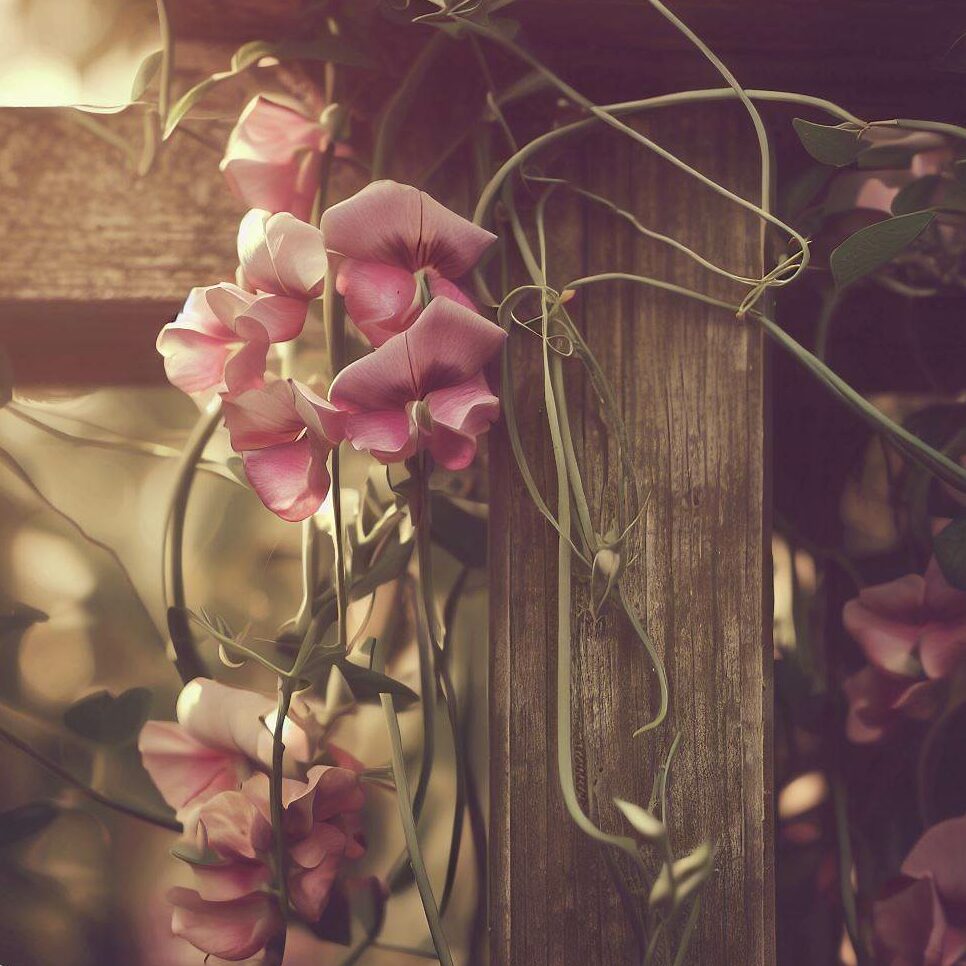Gardening enthusiasts around the world have long cherished the delicate beauty of sweet peas. With their vibrant hues and intoxicating fragrance, these blooms have graced countless gardens, bringing joy to those who cultivate them. As with many plants, the conditions in which they’re grown can significantly impact their health and blossoming. This leads us to a pressing question that many green thumbs ponder:
Do sweet peas grow best in sun or shade? Sweet peas flourish best in conditions that offer a balance of sunlight and shade. In cooler climates, they revel in full sun, soaking up at least 6 hours daily. However, in warmer regions, a bit of afternoon shade ensures they’re not scorched by intense heat. While they can tolerate partial shade, complete shade hinders their growth. For optimal blooms and health, ensure they receive the right amount of sun based on your locale.

The Sunlight or Shade Debate
Do sweet peas grow best in sun or shade? It’s a topic that has seen much discussion amongst gardeners. While some swear by the sun’s golden rays, others vouch for the gentle embrace of the shade. But what do the sweet peas themselves prefer?
🌱 Pea Pointer: When planting any new flower in your garden, it’s essential to understand its natural habitat and preferences. This knowledge ensures that you provide the best environment for growth. 🌱
As we delve deeper into this article, we’ll explore the optimal conditions for these beloved flowers, drawing from expert insights and scientific findings. Whether you’re a seasoned gardener or a budding enthusiast, this guide aims to shed light on the sun and shade preferences of sweet peas, ensuring they thrive in your garden.
Sweet Peas and Sunlight
Sweet peas, with their enchanting blossoms, have specific sunlight requirements that gardeners should heed for optimal growth. The amount of sunlight these delicate flowers receive can greatly influence their health and vibrancy.
Optimal Sunlight for Sweet Peas
For these blooms to truly flourish, they generally prefer locations that receive at least 6 hours of sunlight per day. This ensures they get the energy they need for growth, while also allowing them to showcase their vibrant colors to the fullest.
🌱 Pea Pointer: While determining the sunlight needs of any plant, always consider its native habitat. Sweet peas, for instance, originate from regions with moderate sunlight, which gives a clue to their preferences. 🌱
Too Much Sun?
But can sweet peas grow in full sun? The answer is nuanced. In cooler climates, sweet peas not only tolerate but actually thrive in full sun. However, in regions where the sun blazes with intensity, these flowers might find it a tad overwhelming. Prolonged exposure to harsh sunlight can lead to scorched leaves and hindered growth.
🌱 Pea Pointer: If you’re in a particularly sunny locale, consider providing some afternoon shade for your sweet peas during the hottest parts of the day. 🌱
Understanding and catering to the sunlight needs of sweet peas can make all the difference in their growth. By ensuring they receive just the right amount of sun, you set the stage for a garden filled with their mesmerizing beauty.
Sweet Peas in Shade
While sunlight is often the go-to for many plants, shade has its own unique charm, offering a respite from the intense rays of the sun. But how do sweet peas fare in these cooler, shadowed spots?
Shaded Growth Conditions
For those wondering, “will sweet peas grow in shade?”, the answer is a bit layered. Sweet peas can indeed be grown in the shade, especially in areas where the sun’s intensity is high. However, it’s essential to differentiate between complete shade and partial or dappled shade.
🌱 Pea Pointer: If you’re planting sweet peas in a shaded area, ensure they receive some indirect sunlight or dappled shade for a few hours daily. 🌱
Dappled Shade and Sweet Peas
Dappled shade, where sunlight filters through the leaves of overhead trees, creating a play of light and shadow, can be ideal for sweet peas. This type of shade ensures the plants receive a mix of sun and shade, preventing them from becoming too leggy while searching for sunlight. In such conditions, sweet peas can grow robustly, producing a profusion of fragrant blossoms.
🌱 Pea Pointer: While sweet peas can tolerate shade, ensure the soil remains well-drained. Stagnant water in shaded areas can lead to root rot. 🌱
So, while sweet peas have a penchant for sunlight, they’re adaptable plants. With the right conditions, even a shaded garden can be adorned with their vibrant and aromatic presence.

Best Practices for Planting Sweet Peas
Sweet peas, with their delicate tendrils and fragrant blossoms, are a gardener’s delight. However, to truly let them shine in your garden, it’s essential to understand the best practices for planting and nurturing them.
Finding the Perfect Spot
So, where is the best place to plant sweet peas? These flowers are versatile, you can plant sweet peas in pots, or directly in the ground, but they do have preferences. A location that offers a blend of sunlight and shade is ideal. While they can tolerate a range of conditions, from full sun to dappled shade, it’s crucial to consider the climate. In cooler regions, sweet peas can flourish in full sun. However, in hotter climates, a spot that offers some respite from the afternoon sun will ensure they don’t wilt.
🌱 Pea Pointer: Sweet peas love climbing! Providing them with a trellis or some form of support will not only help them grow but also showcase their beauty. 🌱
Soil and Air Circulation
Well-drained soil is paramount for sweet peas. They dislike waterlogged conditions, which can lead to root rot. Ensuring the soil drains well, perhaps by adding some organic compost, can make a world of difference. Additionally, good air circulation around the plants prevents fungal diseases and promotes robust growth.
Temperature Considerations
While sweet peas are hardy, they do have their limits. Temperatures above 85°F (29°C) can be detrimental. In such heat, the plants might struggle, and flowering could be reduced. It’s essential to ensure they have some shade during the hottest parts of the day, especially if you’re wondering, “can peas grow in full sun?” in such conditions.
🌱 Pea Pointer: Mulching around sweet peas can help retain soil moisture and keep the roots cool during hot spells. 🌱
With the right care and attention, sweet peas can be a stunning addition to any garden, filling the air with their delightful scent and adding a splash of color.

Watering and Maintenance
Sweet peas, like all plants, have a thirst for life. But how often should you quench it? Let’s dive into the essentials of watering and maintaining these fragrant beauties.
Quenching Their Thirst
So, how often do sweet peas need to be watered? While there’s no one-size-fits-all answer, a general rule is to water them deeply once a week. However, during particularly hot or dry spells, they might require a bit more attention, perhaps every 4-5 days. It’s essential to ensure the soil is moist but not soggy.
🌱 Pea Pointer: Watering in the early morning or late evening reduces evaporation, ensuring the plants get the most from each drop. 🌱
Spotting Water Woes
Both underwatering and overwatering can spell trouble for sweet peas. Signs of underwatering include wilting and yellowing leaves. On the other hand, overwatered plants might have yellow leaves too, but they’ll often be accompanied by a soggy base and potential mold growth.
🌱 Pea Pointer: A simple finger test can help. Insert your finger about 2 inches (5 cm) into the soil. If it feels dry, it’s time to water. If it’s wet, wait a day or two. 🌱
With the right balance of water and a keen eye for signs of distress, your sweet peas will thrive and reward you with their delightful blooms.
Watering and Maintenance
Sweet peas, like all plants, have a thirst for life. But how often should you quench it? Let’s dive into the essentials of watering and maintaining these fragrant beauties.
Quenching Their Thirst
So, how often do sweet peas need to be watered? While there’s no one-size-fits-all answer, a general rule is to water them deeply once a week. However, during particularly hot or dry spells, they might require a bit more attention, perhaps every 4-5 days. It’s essential to ensure the soil is moist but not soggy.
🌱 Pea Pointer: Watering in the early morning or late evening reduces evaporation, ensuring the plants get the most from each drop. 🌱
Spotting Water Woes
Both underwatering and overwatering can spell trouble for sweet peas. Signs of underwatering include wilting and yellowing leaves. On the other hand, overwatered plants might have yellow leaves too, but they’ll often be accompanied by a soggy base and potential mold growth.
Handy Hint: A simple finger test can help. Insert your finger about 2 inches (5 cm) into the soil. If it feels dry, it’s time to water. If it’s wet, wait a day or two.
With the right balance of water and a keen eye for signs of distress, your sweet peas will thrive and reward you with their delightful blooms.

Conclusion
As we’ve journeyed through the verdant world of sweet peas, we’ve unearthed some golden nuggets of gardening wisdom. From the sun-kissed petals in cooler climates to the shade-loving blooms in warmer regions, sweet peas have shown us their versatile nature.
🌱 Pea Pointer: Always observe your garden’s microclimate. It’s the key to understanding where your sweet peas will thrive the most. 🌱
So, to answer the burning question: do sweet peas grow best in sun or shade? The answer, dear gardeners, lies in balance. While they adore the sun’s gentle morning embrace, a little afternoon shade, especially in hotter regions, can work wonders.
As you sow your seeds and nurture your plants, remember to listen to the whispers of the earth and the tales of the leaves. With a sprinkle of patience and a dash of love, your garden will soon be adorned with the most enchanting sweet pea blossoms.
